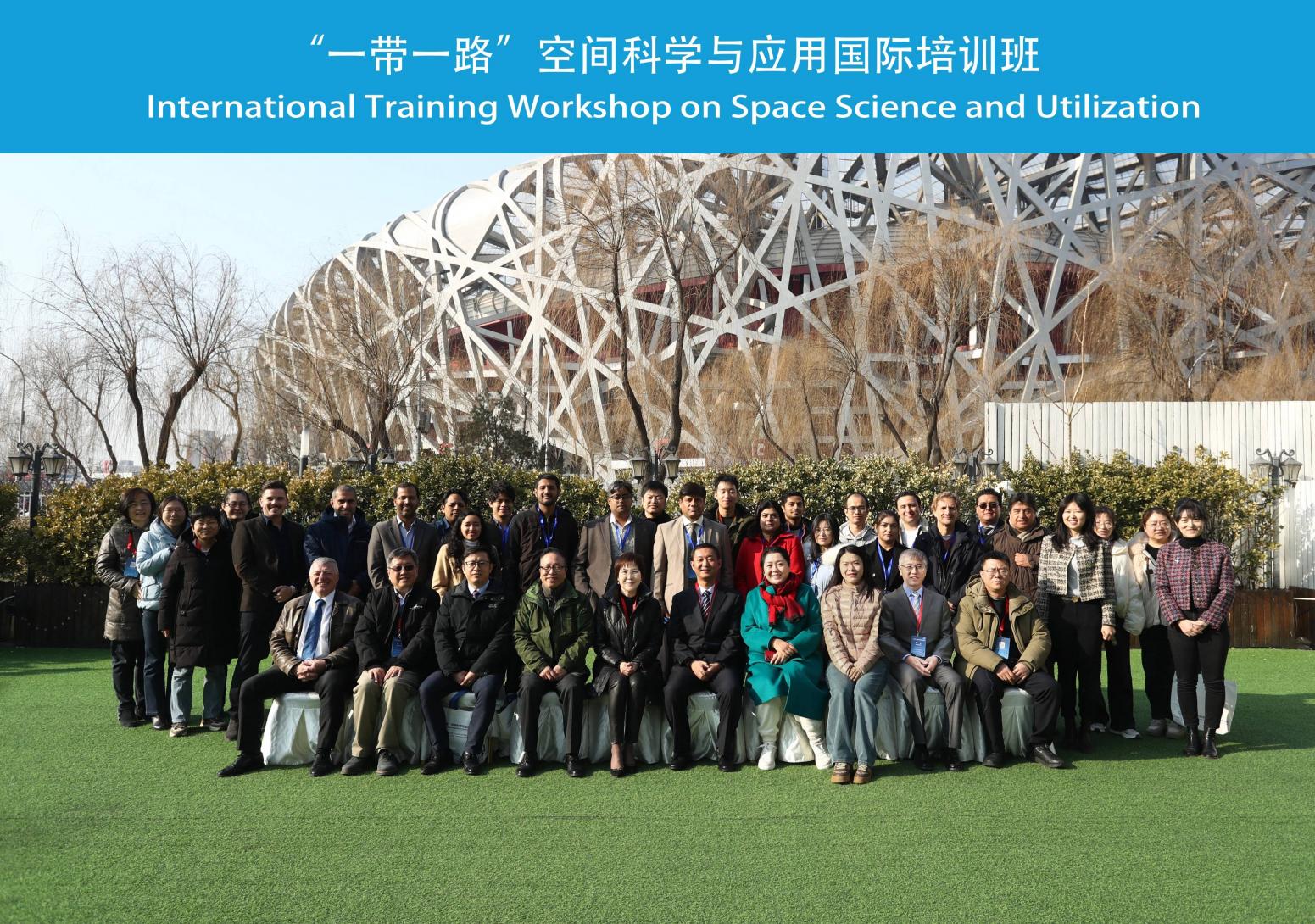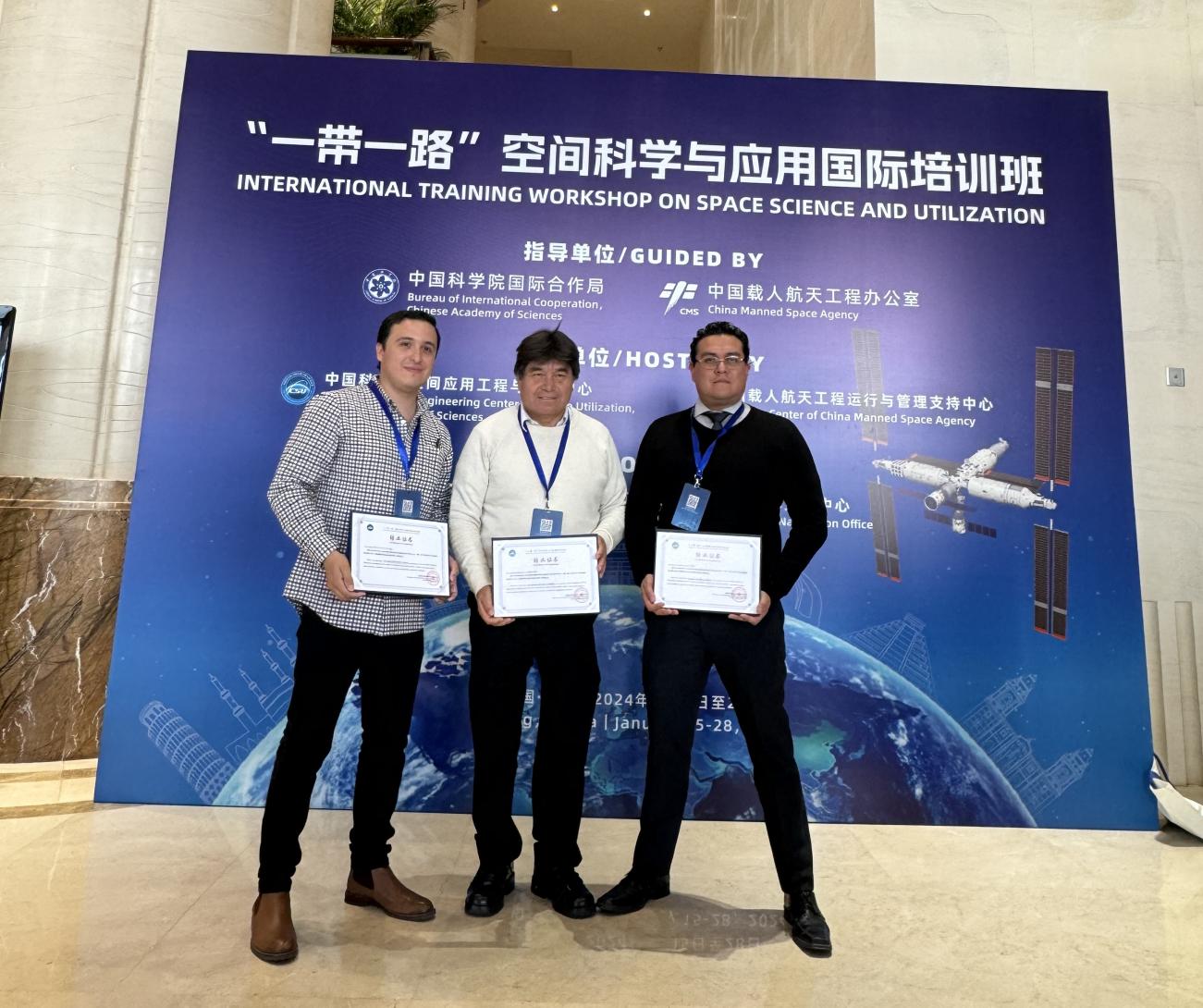INAOE researcher and students attend the International Workshop on Science and Use of Space in China
Daniela Reyes (INAOE)
Santa María Tonantzintla, Puebla, February 23. The students of the doctoral program in Space Science and Technology, Eduardo Valadez Campos and Luis Ángel Fernández Ramos, as well as Dr. Eduardo Mendoza Torres, researcher at the Astrophysics Coordination, attended the International Workshop on Science and Use of Space. This event was held in the city of Beijing, China, from January 15 to 28, 2024. The invitation to the workshop was extended by the Center for Research in Technology and Engineering for the Use of Space (CSU) and funded by the International Cooperation Office, both belonging to the Chinese Academy of Sciences (CAS). This invitation was made in support of the team that is developing the “Infrared Platform for Earth observation”, which is led by Dr. Mendoza, researcher of the Astrophysics Coordination.

The Infrared Platform project is one of nine chosen among 42 projects from 27 countries that were selected during the 62nd session of the UN Committee on the Peaceful Uses of Outer Space and will be installed on the Chinese Space Station (CSS), with the objective of mapping both the water vapor content in the atmosphere and the temperature of the soil of Mexico. This information is very useful, both for astronomical purposes and for a better knowledge of important climatic parameters to have a better knowledge of the impact that climate change has on them, as well as phenomena related to it and its consequences.

Teacher Eduardo Valadez is in charge of developing the image acquisition system with the platform's cameras, two of which operate in the near-infrared range, one in the mid-infrared and a fourth in the visible spectrum. In turn, teacher Luis Fernández has recently joined the work team carrying out mechanical studies, particularly in the vibrational simulations of the structure of the instrument they are developing.
The aforementioned workshop was attended by more than 50 guests, exhibitors and participants from more than 10 countries and various regions of China. The workshop lasted 14 days and aimed to provide participants with a deeper understanding of trends in the development of space technology and scientific research, as well as the use of space. During the activities, the guests presented about the work they have done or are doing in the area of space science and technology. In addition, presentations were made by researchers from various research institutes of the Chinese Academy of Sciences involved in the development of instruments for CSS. At the opening ceremony, Dr. Gao Ming, CEO of CSU, highlighted the importance of the use of space in global development and said that “the workshop will provide a means for scientists and researchers from around the world to share their knowledge and exchange experiences, promoting innovation and progress in the use of space through close international cooperation.”
Finally, in an interview, Dr. Eduardo Mendoza comments: “… the invitation to the Workshop is a sample of the opportunities offered by other countries, such as China, to support the work carried out by various research groups in Mexico. We hope that this collaboration will allow us to strengthen our instrument for its operation in outer space and for the conditions it will experience on the launch rocket. Furthermore, the experience acquired both in this project and in other similar ones will allow us to propose new projects that address tasks applied both to our research areas and to others that are useful to help us better understand the conditions related to the situations we experience as a society, like climate change. The information presented at the Workshop, organized by the CAS in Beijing, provides tools for the research areas of our Institute and can also contribute to useful tasks in other areas.”
Luis Enrique Erro # 1, Tonantzintla, Puebla, México, Código Postal 72840, Tel: (222) 266.31.00, difusion@inaoep.mx
This work is licensed under a Creative Commons Attribution-NonCommercial-NoDerivs 2.5 Mexico License.


